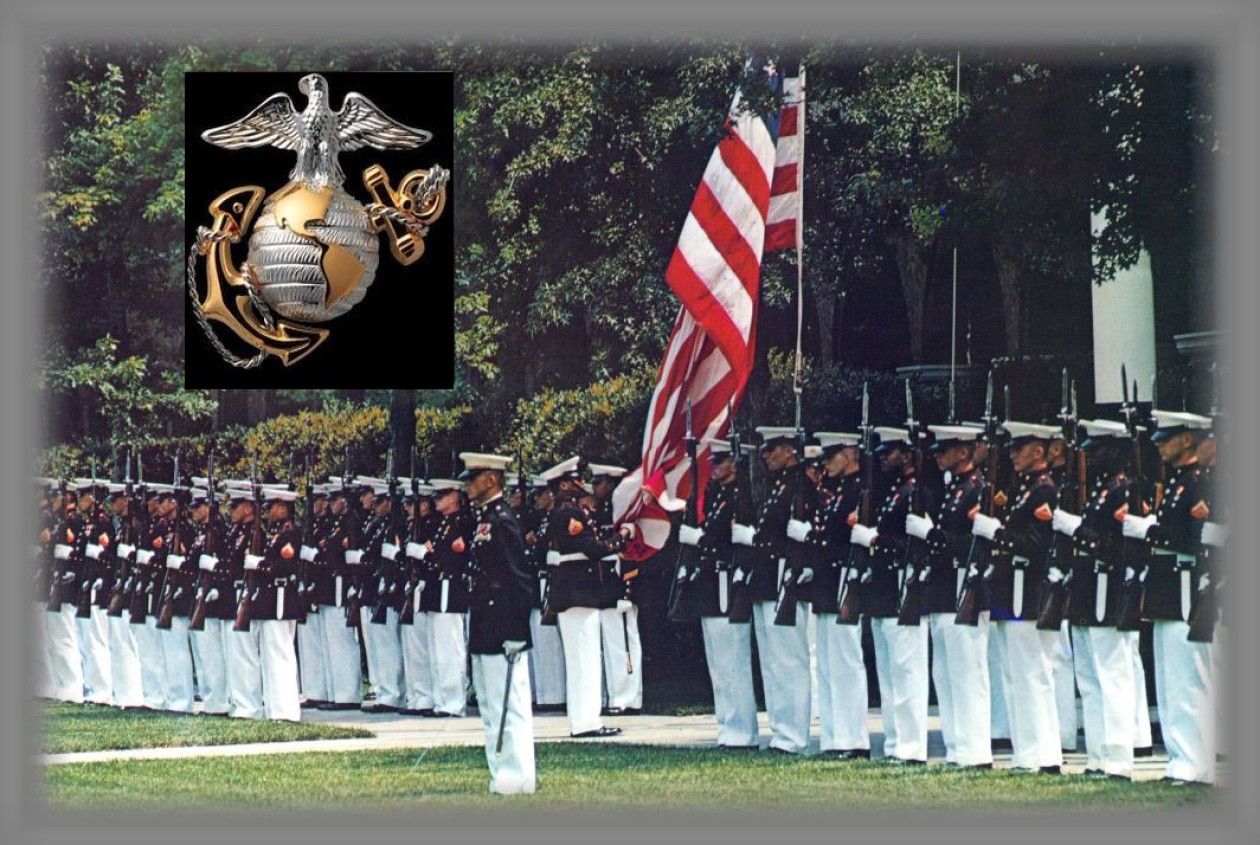While I have pretty much remained silent about CMC Berger’s FD 2030, there has been and continues to be a plethora of verbiage about it. And as far as I have been able to ascertain none of it has been good. I reckon I considered it a long gone conclusion with the new CMC simply carrying on his predecessor’s image of the new Corps. In nine days the world is going to change, make no mistake about that; the proverbial shit will hit the fan globally, not just here in the US. Our mainstream nerds will have so much to talk about it isn’t even funny. I will start watching the news again, except it will be either CNN or that ridiculous MSNBC. I can’t wait to hear their spins.
But I digress. FD 2030 is a disaster; our Corps is not the same and there is some serious doubt that it never will again be America’s 911 Force. The divestitures were HUGE, so much so that anyone who thinks it can still respond to an urgent crisis somewhere in the world is living under a rock. Do you actually know what all was given up?
 Here is an article written by Captain Dale Dye, USMC (Ret). In case you don’t know of him, once he retired he became a favorite consultant in Hollywood for any producer who wanted to show or talk about Marines. In fact, he convinced producer Oliver Stone to let him put the principal actors—including Charlie Sheen, Willem Dafoe, Johnny Depp, and Forest Whitaker—through an immersive 30-day military-style training regimen before the filming of Platoon. He limited how much food and water they received; when the actors slept, he fired cartridge blanks to keep them awake. Dale who had a small role in the movie as Captain Harris, also wrote the novelization based on Stone’s screenplay.
Here is an article written by Captain Dale Dye, USMC (Ret). In case you don’t know of him, once he retired he became a favorite consultant in Hollywood for any producer who wanted to show or talk about Marines. In fact, he convinced producer Oliver Stone to let him put the principal actors—including Charlie Sheen, Willem Dafoe, Johnny Depp, and Forest Whitaker—through an immersive 30-day military-style training regimen before the filming of Platoon. He limited how much food and water they received; when the actors slept, he fired cartridge blanks to keep them awake. Dale who had a small role in the movie as Captain Harris, also wrote the novelization based on Stone’s screenplay.
Here, in his usual uncensored style, is a good recount of everything that has happened since Berger’s stroke of his pen behind closed doors.
Marine Swords Beaten into Puny Plowshares
Not likely anyone in authority will be influenced by a long-retired Mustang bitching about the state of today’s Marine Corps, but I feel compelled to lob a few grenades at Force Design 2030. That’s the radical restructuring of the Corps ordered by former Commandant General David Berger in a sleazy backroom deal that demanded all the sycophants involved sign non-disclosure agreements. Since it was announced three years ago, the revamping of Marine missions, tactics, and techniques has created a defecation deluge from opponents who believe—as I do—that the whole thing has a lot in common with a jet engine. It sucks and blows.
Before I get into the weeds here, let me say a thing or two about the general mission and offensive ethos of the United States Marine Corps. Simply stated, the Corps is—or was—always designed to be the country’s 911 force, most ready to fight when the nation is least ready. It’s meant to be the crash crew in crisis response anyplace and anytime around the world. The key asset for global combatant commanders was a Marine Corps air-ground team (MAGTF) always forward deployed—usually aboard Navy amphibs—trained, equipped, and instantly ready to handle any mission in the full range of military operations.
For some reason known only to General Berger and his clones, that wasn’t good enough for a force facing China in the Western Pacific as the perceived priority threat. Rather than tweak weapons, training, and positioning to meet that challenge as Marines typically do, they decided to throw the baby out with the bathwater and ordered a tactical shift to defense with primary focus on small teams of missile-armed Marines who would jump from island to island in efforts to damage or deter a growing Chinese blue-water fleet in the event of a shooting war in the Western Pacific. The Navy—and certainly the Army—currently has a plethora of missiles capable of sinking ships. Here’s a hint. If you want to avoid redundancy arguments, don’t try to do something another service already does and probably does it better than you can.
Not much thought—if any—was given to moving these small vulnerable Marine detachments, much less resupplying and otherwise supporting them under the ever vigilant eyes of Chinese radars, satellites, and cyber capture networks. And apparently never mind if the sovereign nations that claim the territory Marines would need to launch their ship-killer missiles want no part of a super-power fight. What if—as entirely likely—those sovereign nations deny the Marines those operational bases? I’ll wait while someone thinks that through.
Under this misbegotten concept, the US Navy has a huge vote as the provider of small, fast amphibious ships needed to move Marines. And they voted no. Not only do we have insufficient gator freighters in our current fleet, but the Navy has no apparent plans to produce the smaller inter-island transports called for under FD 2030.
Screwing around with the Marine’s central mission—locate, close with, and destroy the enemy by fire and maneuver—threatens to turn the US Marine Corps into a single-mission niche outfit ready to die in place on remote islands and unready to handle crises anywhere else. It puts Marines in a defensive posture when our time-tested ethos has always been the offense, forward deployed and eager to fight any enemy. It’s that attitude that used to permeate Marine ranks and kept us supplied with avid young recruits. Seems to me given the puny recruiting numbers we’re seeing from all the other services, the Marine Corps can ill-afford to sacrifice this aspect of their gung-ho, first-to-fight reputation.
In order to twist itself around this maypole of new war fighting concepts, General Berger cooked the books in what he called “divest to invest” which basically amounts to robbing Peter to pay Paul as my Dad used to call false-economy measures. That little bookkeeping maneuver made some $16 billion available which the new model planners spent on long-range missile batteries, drones, and other high-tech goodies to equip what are now proudly called Marine Littoral Regiments. Fine if all future fights are in littoral areas of the world but history begs us not to bank on that.
Most stunning in an outfit that focuses on the combat power of basic infantry, FD 2030 orders a reduction of three full battalions from the point of the Marine Corps bayonet, or a loss of 14 percent of combat strength. If that wasn’t dumb enough in formations that face inevitable casualties in ground combat, the end-strength for a Marine infantry battalion has been reduced by 200 Marines across the board which translates to a loss of 4,200 frontline war fighters. Marine Corps Reserves won’t be there to fill in the gaps. The reserves lost two full infantry battalions under the FD 2030 axe.
None of this seemed to bother force designers all that much as they also eliminated all—that’s correct all—Marine Corps tanks. So much for lessons learned in Ukraine or the Middle East. Supporters say if the Marines need tanks in a future fight, the US Army will provide them. That’s unlikely to be any kind of high priority for an Army outfit that might well be engaged in its own fight. And even if they were willing to cough up a platoon or two of Abrams, it would likely be at the end of a lengthy and complicated pipeline. Marines need tanks at hand, not in some remote Army motor pool.
Which brings me kicking and screaming to the matter of fire support for what’s left of Marine Corps maneuver battalions in the next fight. God help the grunt commander who needs quick and accurate artillery fire support, a reliable staple of infantry combat in modern times. He might not get it as FD 2030 cut a full 16 battalions of cannon artillery for a firepower reduction of a whopping 76 percent. Savings were spent to stand up 14 rocket artillery battalions which is OK if you’re shooting over the horizon at Chinese ships, but not worth a damn to a grunt outfit pinned down and in need of rapid steel on target at close ranges in crappy weather. We will hopefully live to regret this emasculation of versatile, reliable tube artillery. If you have any doubts about the utility of cannons and howitzers on the modern battlefield, let me direct your attention to the Ukraine where artillery on both sides is proving to be a deciding factor.
Another dumb-ass divestiture under FD 2030 came in Marine Corps aviation. One of the most brilliant assets of forward-deployed Marine units is that they come to the fight carrying their own air support. Both fixed-wing and rotary-wing aviation was quickly available to a MAGTF commander who could call it up and then down on an enemy without having to ask the Air Force or compete with other battlefield priorities. Not so simple these days.
FD 2030 cut almost 30 percent of tactical and logistical aviation support. Offensive aviation cuts included at least two of seven light attack helicopter squadrons which will be sorely missed by grunts on the ground who always appreciate the quickly available support of helicopter gunships. Also eliminated were three of the current 17 Osprey tilt-rotor squadrons and three of eight heavy-lift helicopter units. With the Corps struggling to field a reliable sea-shore connector—the new Amphibious Combat Vehicle is still not approved for deployment—now seems like a hell of a time to be cutting aviation logistic and transportation support.
I could go on here about the elimination of engineer support units such as bridging and breeching units that are always a valuable and versatile piece of the battlefield toolbox, but my morale might not survive it. What’s keeping me afloat as an old but loyal believer in the spirit and inherent value of the Corps, is the controversy at very high and influential levels that surrounds the changes mandated by FD 2030. Wiser heads than mine are arguing for a return to sanity. It may take some long and bloody time to correct our course, but I believe we will do just that.
In the end active-duty Marines, veterans, fans, and friends of the Corps will demand it. As General Brute Krulak wisely said back in 1957, “America does not need a Marine Corps. It wants one.” And the one it wants is not the one that’s being shaped by Force Design 2030.
I was fortunate enough to meet Dale while I was at Marine Barracks, NAS, Lemoore CA. It was during an attempt to have Brian Dennehy as our guest for a birthday ball. Quite an impressive guy to represent our Corps to Hollywood.


